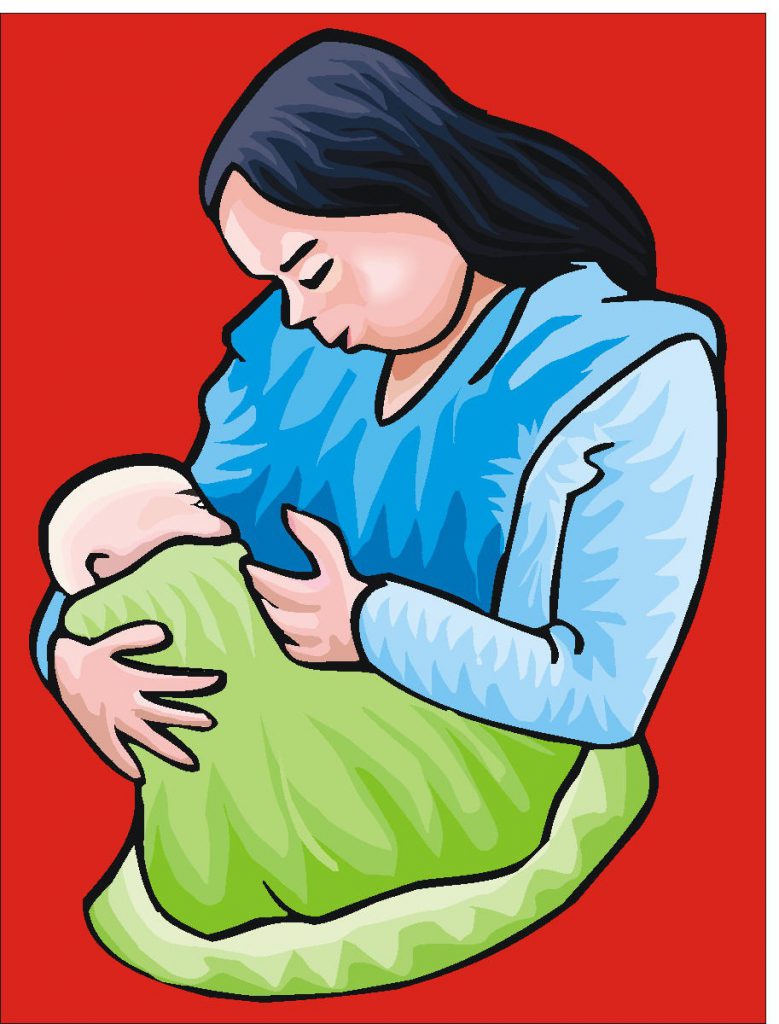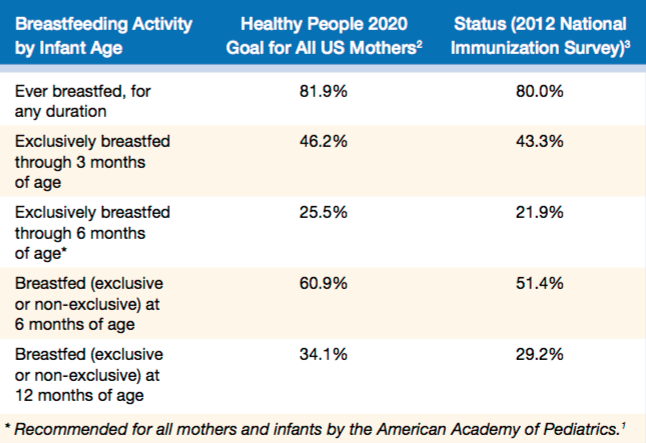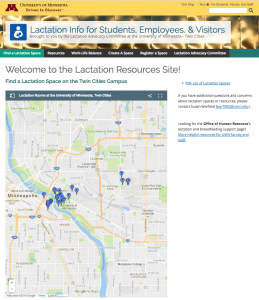Download and share a PDF version of the below information.
Benefits for the Infant
Breastfeeding is associated with decreased risks for common infant ailments—from colds to ear, nose, and throat infections to gastrointestinal infections—and to the development of chronic conditions later in life (1). Given the substantial body of evidence supporting the benefits of breast milk on infant health, the American Academy of Pediatrics (AAP) recommends that infants be breastfed exclusively (the infant receives only breast milk) for the first six months of life (1).
Benefits for the Mother
Breastfeeding also has physiological benefits for the mother, including increased mother-infant bonding and decreased risks for developing breast and ovarian cancer. In mothers with no history of gestational diabetes mellitus, breastfeeding decreases the risk of developing type 2 diabetes mellitus. Data have also shown that women who have a cumulative lifetime duration of breastfeeding greater than 12 months are at reduced risks for rheumatoid arthritis, hypertension, hyperlipidemia, cardiovascular disease, and diabetes mellitus (1).
Healthy People 2020 has several goals to increase the proportion of US infants who are breastfed (2). This table compares these goals with the most recent data about breastfeeding from the 2012 Centers for Disease Control and Prevention’s (CDC) National Immunization Survey (3), reflecting the experience of infants born in 2012.
Healthy People 2020 also has a goal that 38% of US employers provide an on-site lactation/mothers room to support breastfeeding mothers (4). This goal may be easily achieved, because the Affordable Care Act requires employers to provide break time and a place for most hourly wage-earning, and some salaried, employees to express breast milk at work. Employers must provide a “reasonable” amount of time and must provide a private space other than a bathroom. They are required to provide this accommodation for employees whose infants are younger than one year old. Some states also have laws that encourage breastfeeding (4).
READ MORE about breastfeeding in our articles Promoting Breastfeeding in a Community Context, Creating Institutional Change: Breastfeeding Advocacy, Research, and Policies and From Parent Education to a Population Focus: Addressing the Needs of MCH Populations, all from our winter 2016 and summer 2016 volumes of Healthy Generations.
OUR MCH MPH STUDENTS have explored many aspects of breastfeeding through their studies. Read their abstracts here.
References
- American Academy of Pediatrics. Breastfeeding and the use of human milk. Pediatrics 2012;129:e827-e841. Available from: z.umn.edu/bfeedped.
- Healthy People 2020. MICH-21. Washington, DC: US Department of Health and Human Services, Office of Disease Prevention and Health Promotion. Available from: z.umn.edu/hp2020bf.
- Centers for Disease Control and Prevention, Department of Health and Human Services. Percentage of US Children Who Were Breastfed, by Birth Year, National Immunization Surveys, United States, 2002-2012. National Immunization Surveys. Available from: z.umn.edu/cdcbf.
- National Conference of State Legislators. Breastfeeding state laws. Available from: z.umn.edu/acabf.
Looking for lactation rooms at the UMN?


